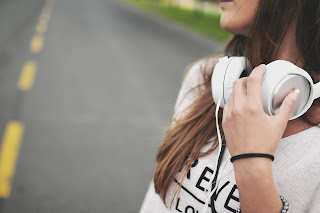What is Photojournalism
What is Photojournalism?
Photojournalism is a unique kind of journalism, wherein images tell a news story. Normally, photojournalism includes the use of frozen images, and commonly used for print in newspapers and magazines. In contrast, this type of journalism may take the form of video for broadcast news. The key goal of photojournalism is for the photojournalist to portray a story through snapshots. A shared problem amongst many writers is penning the right words to describe an incident or reaction. For example, a news writer reporting on a serious auto accident can use words like, "grave," or "mangle" to illustrate the wreck. Yet, words bring to mind limited emotions, and readers must rely on their imagination. On the other hand, photographs are compelling and convincing. What's more, images allow readers to grasp the printed or spoken word.
Distinguishing Photojournalism from other areas of Photography?
The use of images makes photojournalism distinct from other types of photography and journalism. News writers must rely on the written word to bring a story to life. This is a difficult craft, which generally entails the writer expanding their thinking and digging deep into their own emotions. Great journalism it capable of conveying a range of emotions - happiness, sadness, anger, and so forth. Unless a news writer connects with the story, he or she is unable to compose on an emotional level. Sometimes, this involves including a photo with the story.
Other types of photography may use images as a simple means of capturing a moment or beautiful scenery. However, this type of photography lacks elements crucial to photojournalism. Three important aspects of photojournalism include:
1. Timeliness or Relevance - Images or photos are significant to a written story
2. Impartiality - Depicted images are a non-discriminatory portrayal of actual events.
3. Narrative Story - Collective photographs and relevant news elements can effectively update and inform readers.
Careers in Photojournalism
Careers in photojournalism are appealing to persons with a passion for both writing and photography. Photojournalists commonly write news pieces to accompany their images. Thus, a photojournalist must be ready to shoot images at all times. Unlike journalists who can eyewitness an event, and compose an article based on memory of the event, a photojournalism cannot re-create a newsworthy photo. For this matter, the best photojournalists know the value of always having photography equipment readily available.
Examples of Photojournalism
There are many examples of photojournalism. From time to time, photojournalism is associated with documentary photography. However, because a documentary entails planned photography, it does not quite fit into the photojournalism category. Unplanned shots are a key element in photojournalism. For example, a wedding photographer may take random impromptu snapshots throughout a ceremony and reception, and then arrange the pictures in a photo album according to order of events. In essence, the wedding album will tell a story by chronicling the nuptials from beginning to end. Furthermore, a travel photographer may create a portfolio including examples of photojournalism by including spur-of-the-moment snapshots of different places and people in their environment.
Editing Images and the Ethics of Photojournalism
Because photojournalism is built around objectivity and naturalness, the wide use of enhanced photography technology is a debatable topic. Digital cameras allow photojournalists to capture numerous pictures without worrying about having adequate film. Enhanced technology also allows photographers to take photos using a variety of digital recording images such as video phones. Moreover, laptop computers and electronic mail allows the immediate transmission of high-quality pictures.
Yet, the use of technology in the field of photojournalism does raise some ethical issues. In some cases, photojournalists have little control over their photos. If working for a newspaper or magazine, a photo editor usually determines how the photos are used within the publication. With this said, an editor may request digital altering or manipulation of certain photos, which can make photos lose their naturalness.

